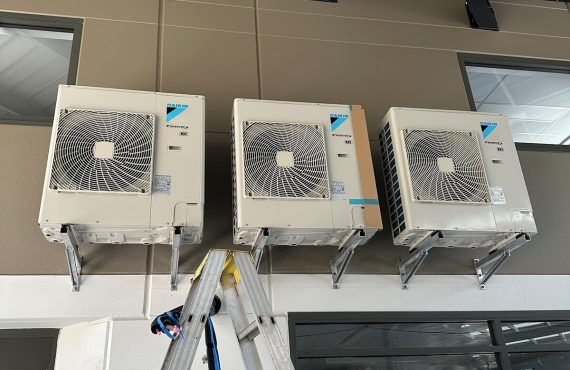Introduction
Ducted air conditioning is a popular choice for homeowners seeking a comprehensive and discreet cooling solution. A common misconception is that ducted systems can only be installed in new builds, but the truth is, they can also be retrofitted into existing homes. This blog will explore the feasibility and process of installing ducted air conditioning in existing homes, addressing key considerations and benefits.
Understanding Ducted Air Conditioning
Ducted air conditioning systems consist of a central unit connected to a series of ducts that distribute cool air throughout the home. This setup allows for consistent and efficient climate control across multiple rooms. The primary benefits of ducted air conditioning include enhanced comfort, improved energy efficiency, and a streamlined, unobtrusive appearance compared to multiple split systems.
Feasibility of Installing Ducted Air Conditioning in Existing Homes
Assessing the Suitability of the Home
To determine if ducted air conditioning is a viable option for your existing home, several factors need to be considered:
- Space Requirements: Adequate roof space or wall cavities are necessary to accommodate the ductwork and central unit.
- Structural Considerations: The home’s structure must support the installation, including potential modifications to accommodate ducts.
- Electrical Capacity: The home’s electrical system must be able to support the added load of the ducted air conditioning unit.
Potential Challenges and Solutions
- Limited Space: Homes with limited roof or wall space may require creative solutions, such as slimline ducts or additional structural modifications.
- Structural Modifications: Some homes may need minor structural adjustments to fit the ductwork. These modifications should be planned and budgeted for.
- Budget Constraints: While retrofitting can be more expensive than installing in a new build, careful planning and seeking multiple quotes can help manage costs.
The Installation Process
Step-by-Step Overview
- Initial Assessment and Consultation: A professional will evaluate your home to determine suitability and discuss your cooling needs.
- Planning and Designing the System Layout: A custom system layout will be designed to ensure optimal performance and efficiency.
- Installing Ductwork and Indoor/Outdoor Units: The ductwork is installed in the roof space or wall cavities, and the central unit is positioned either indoors or outdoors.
- Electrical Work and Connections: The system is connected to the home’s electrical system, ensuring adequate power supply.
- Testing and Commissioning the System: The system is thoroughly tested to ensure it operates correctly and efficiently.
Timeline for Installation
The installation process can vary depending on the complexity of the project, but typically, it can take anywhere from a few days to a week. Factors such as the size of the home, the need for structural modifications, and the availability of the installer can affect the timeline.
Costs Involved
Breakdown of Typical Costs
- Equipment and Materials: Costs for the central unit, ducts, vents, and other necessary components.
- Labour and Installation Fees: Professional fees for the installation process.
- Additional Costs: Potential costs for structural modifications, electrical upgrades, and additional accessories.
Budgeting Tips
- Obtain multiple quotes to compare prices and services.
- Plan for potential additional costs to avoid surprises.
- Consider the long-term energy savings of a more efficient system.
Benefits of Retrofitting Ducted Air Conditioning
- Enhanced Comfort: Provides consistent cooling throughout the home.
- Improved Energy Efficiency: More efficient than running multiple split systems.
- Increased Property Value: Adds value and appeal to your home.
- Aesthetic Advantages: Offers a discreet and streamlined appearance.
Choosing the Right Installer
Selecting a reputable and experienced installer is crucial for a successful ducted air conditioning installation.
Tips for Finding and Vetting Installers
- Check Credentials and Certifications: Ensure the installer is licensed and certified to perform the work.
- Read Reviews and Testimonials: Look for feedback from previous customers to gauge their satisfaction.
- Request Quotes and Compare Services: Obtain detailed quotes from multiple installers to compare costs and services.
For those in Sydney, it’s essential to choose a company experienced in ducted air conditioning installations. One such option is Enercell Air Conditioning, which offers comprehensive services for Ducted Air Conditioning in Sydney.
Conclusion
Installing ducted air conditioning in an existing home is not only feasible but also offers numerous benefits, including enhanced comfort, improved energy efficiency, and increased property value. By carefully assessing your home’s suitability, planning the installation process, and choosing the right installer, you can enjoy the advantages of ducted air conditioning in your existing home.
Keep an eye for more news & updates on TimesAnalysis.Com!



